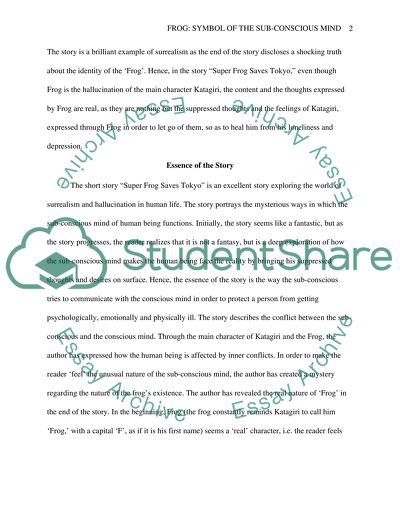Cite this document
(“Frog: Symbol of the Sub-conscious Mind Essay Example | Topics and Well Written Essays - 1500 words”, n.d.)
Frog: Symbol of the Sub-conscious Mind Essay Example | Topics and Well Written Essays - 1500 words. Retrieved from https://studentshare.org/literature/1451718-frog-symbol-of-the-sub-conscious-mind
Frog: Symbol of the Sub-conscious Mind Essay Example | Topics and Well Written Essays - 1500 words. Retrieved from https://studentshare.org/literature/1451718-frog-symbol-of-the-sub-conscious-mind
(Frog: Symbol of the Sub-Conscious Mind Essay Example | Topics and Well Written Essays - 1500 Words)
Frog: Symbol of the Sub-Conscious Mind Essay Example | Topics and Well Written Essays - 1500 Words. https://studentshare.org/literature/1451718-frog-symbol-of-the-sub-conscious-mind.
Frog: Symbol of the Sub-Conscious Mind Essay Example | Topics and Well Written Essays - 1500 Words. https://studentshare.org/literature/1451718-frog-symbol-of-the-sub-conscious-mind.
“Frog: Symbol of the Sub-Conscious Mind Essay Example | Topics and Well Written Essays - 1500 Words”, n.d. https://studentshare.org/literature/1451718-frog-symbol-of-the-sub-conscious-mind.


